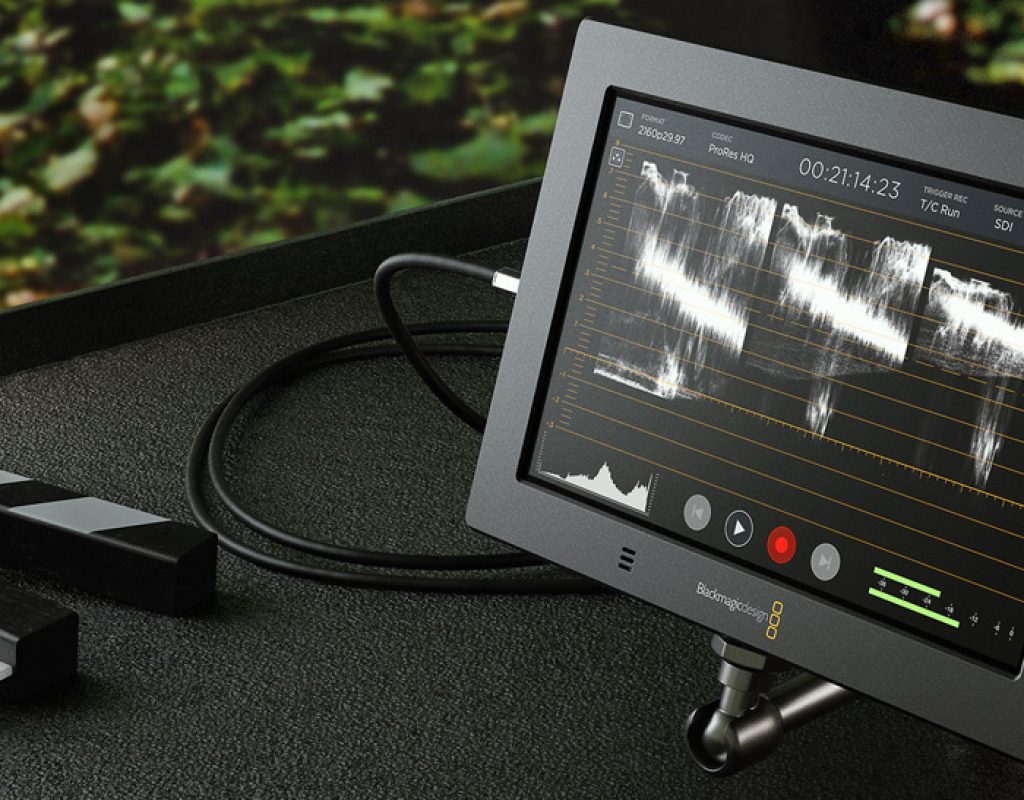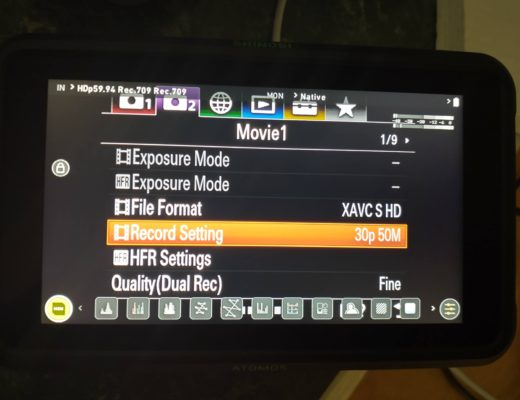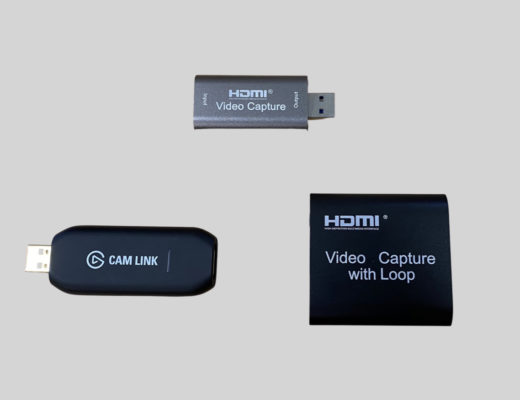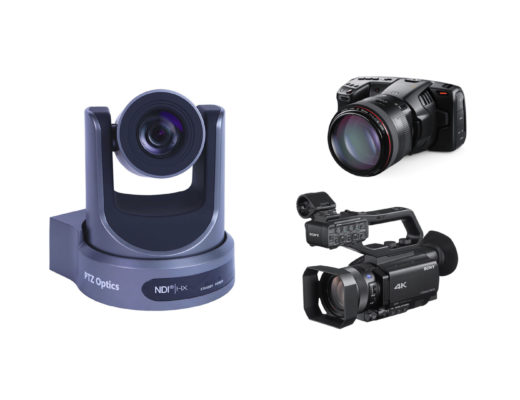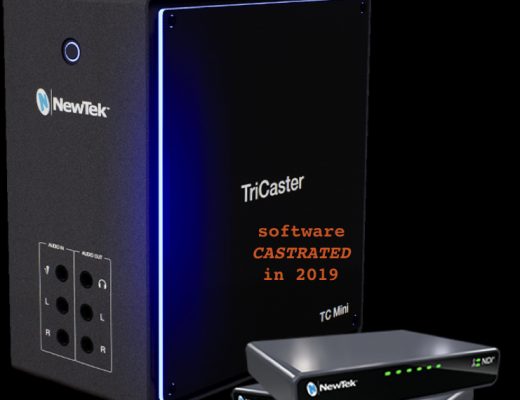
After its obscure press release at NAB last week, Blackmagic has now clarified that its Video Assist’s new updated firmware indeed includes Castilian & Mandarin (among 9 other languages), but does not currently include Cantonese, Catalán, Basque, Galician, PsF removal or reverse telecine. Blackmagic says that it will be adding more languages later. What does this situation mean to you? The first issue obviously depends upon your language needs or preferences. The second pair of issues depends upon whether your camera can output native pure progressive over HDMI or SDI at your desired framerate —or if not, whether you are willing and able to compensate for the pseudo-interlaced recording in post, via a workaround, or perhaps choose a competitive device from Átomos or Video Devices which can take care of this issue before recording. Ahead I’ll go into detail about all of that, and give you examples.
Languages
Even though Blackmagic was obscure about the languages included in its initial press release about its new firmware for Video Assist, it is now clear that the languages are:
- Castilian (the most widely used Spanish language worldwide, but certainly not the only one)
- English
- French
- German
- Italian
- Japanese
- Korean
- Mandarin (the most important Chinese language, but certainly not the only one)
- Portuguese
- Russian
- Turkish
Blackmagic also indicated that it would be adding even more languages, but didn’t indicate which ones or when.
No PsF removal or reverse telecine in Video Assist
Even though back in 2015, Blackmagic was looking into this issue, the company is apparently no longer doing so, since it confirmed no such capability of PsF removal or reverse telecine in Video Assist.
For those we are new to this topic or require a refresher, here is an executive summary:
Almost all standard definition video is/was interlaced, where each video frame is/was divided into fields (which have half of the spatial resolution of a frame). Interlaced video complicates things, considering that some interlaced video formats have a different dominant field. In addition, interlacing adds artifacts and makes compression more complex. On the other hand, all 4K (both Cinema 4K and 4K UHD) and some HD formats are truly progressive, meaning that they consist only of true frames, without fields. However, while some HD video is truly progressive; some HD video is authentically interlaced; and some is HD video progressive disguised as interlaced video. Most HD cameras and camcorders which are capable of imaging and even recording true progressive internally, are sadly incapable of delivering true progressive via their HDMI or SDI port, while others are capable of delivering true progressive video via HDMI or SDI port at some framerates, but not at others… and some can’t output pure progressive at all, even though they can record it internally. In those cases, those cameras deliver the progressive video via the HDMI or SDI port disguised as interlaced video in either two different ways, depending upon the original framerate, as indicated below:
- 23.976p (aka “23.98”) via a telecine pulldown at 59.94i, using a 2:3 (aka 3:2) pulldown
- 25p via PsF as 50i using a 2:2 pulldown
- 29.97p via PsF as 59.94i using a 2:2 pulldown
As I have covered in several past articles, manufacturers like Átomos, NewTek and Video Devices (a brand of Sound Devices) have recognized this issue and have all added the function to reverse this undesired phenomenon caused sadly by many camera manufacturers. All three mentioned companies do this the correct way, without de-interlacing, since de-interlacing a disguised progressive signal degrades it unnecessarily. In most cases, it is necessary to indicate to the device —manually— that the particular source is PsF or telecine.
To be clear, the absolute best scenario is have the camera output pure progressive directly via HDMI or SDI. The second best way is to have the device (i.e. from Átomos, NewTek or Video Devices) properly perform reverse telecine or convert PsF into progressive before recording. The third and last solution is to follow the instructions in my PsF missing workflow series, which up until now include 10 parts.
If you are going to record 4K UHD
If you are recording 4K UHD using the new Video Assist 4K model, you have nothing to worry, since 4K over HDMI is always progressive, so there is no issue to record progressive in this case. (The Video Assist 4K only offers 4K UHD, and does not offer Cinema 4K.)
If you are going to record 720p
If you are going to record 720p59.94 or 720p50, there is no problem with either Video Assist.
If you desire to record 1080p
If you are lucky enough to have one of the few cameras that can deliver pure progressive over HDMI at your desired framerate, then you may certainly consider a Video Assist from Blackmagic. However, if your camera is incapable of outputting pure progressive at your desired framerate, you might consider purchasing one of the similar products from Átomos or Video Devices (a brand of Sound Devices) to avoid the hassle and/or possible human error of the workarounds in post. I am truly surprised that Blackmagic has chosen to ignore this known issue and feature, while its primary competition has addressed and solved it.
Upcoming articles, reviews, radio shows, books and seminars/webinars
Stand by for upcoming articles, reviews, and books. Sign up to my free mailing list by clicking here. Most of my current books are at books.AllanTepper.com, and my personal website is AllanTepper.com.
Si deseas suscribirte a mi lista en castellano, visita aquí. Si prefieres, puedes suscribirte a ambas listas (castellano e inglés).
Listen to his CapicúaFM show at CapicúaFM.com in iTunes or Stitcher.
FTC disclosure
No manufacturer is specifically paying Allan Tépper or TecnoTur LLC to write this article or the mentioned books. Some of the other manufacturers listed above have contracted Tépper and/or TecnoTur LLC to carry out consulting and/or translations/localizations/transcreations. Many of the manufacturers listed above have sent Allan Tépper review units. So far, none of the manufacturers listed above is/are sponsors of the TecnoTur programs, although they are welcome to do so, and some are, may be (or may have been) sponsors of ProVideo Coalition magazine. Some links to third parties listed in this article and/or on this web page may indirectly benefit TecnoTur LLC via affiliate programs. Allan Tépper’s opinions are his own.
Copyright and use of this article
The articles contained in the TecnoTur channel in ProVideo Coalition magazine are copyright Allan Tépper/TecnoTur LLC, except where otherwise attributed. Unauthorized use is prohibited without prior approval, except for short quotes which link back to this page, which are encouraged!

Filmtools
Filmmakers go-to destination for pre-production, production & post production equipment!
Shop Now